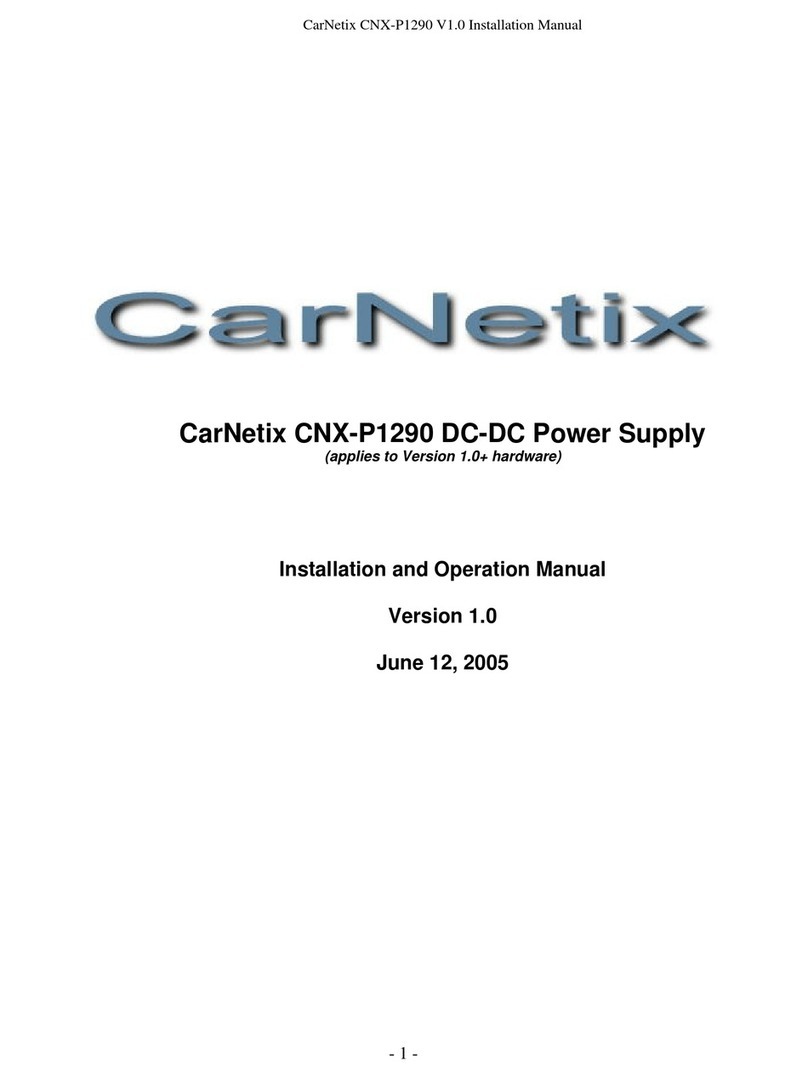
CarNetix PSU-PC12 V1.1 Installation Manual
Table of Contents
1.0 PSU-PC12 Installation Instructions................................................................................................4
1.1 Overview..................................................................................................................................... 4
1.2 Features.......................................................................................................................................6
2.0 Installing the PSU-PC12................................................................................................................. 7
2.1 Before You Begin.......................................................................................................................7
2.2 Setting the Jumpers.....................................................................................................................8
JP1 Jumper Settings...................................................................................................................... 9
JP3 Jumper Settings (+5V Always ON)....................................................................................... 9
JP4 Jumper Settings (Secondary Output Control)........................................................................9
2.3 Connecting the Wires................................................................................................................11
2.4 Optionally Connecting the Xenarc LCD Screen.......................................................................14
3.0 Using the Pulse Start Feature........................................................................................................17
3.1 Pulse Start Connections............................................................................................................17
3.2 Pulse Start Operation................................................................................................................ 17
3.2.1 What is a pulse?................................................................................................................. 17
3.2.2 Starting the PSU with a pulse............................................................................................ 18
3.2.3 Stopping the PSU with a pulse ..........................................................................................18
3.2.4 Prolonging the Shutdown Delay State...............................................................................18
3.2.5 Shutting down the PSU with double pulses.......................................................................18
3.2.6 Ignition Override................................................................................................................18
4.0 PSU-PC12 Startup/Shutdown Controller......................................................................................19
4.1 Hibernate/Standby Operation ...................................................................................................19
4.2 SSC Operation States................................................................................................................ 19
4.2.1 Idle State............................................................................................................................ 19
4.2.2 RunDelay State..................................................................................................................19
4.2.3 Bootup Lockout State ........................................................................................................ 20
4.2.4 Run State............................................................................................................................20
4.2.5 Shutdown Delay State........................................................................................................20
4.2.6 Shutdown Sequence State..................................................................................................20
4.2.7 Forced Shutdown State......................................................................................................21
4.3 Fault Indicator LEDS................................................................................................................21
5.0 Conditions of Use ......................................................................................................................... 24
- 2 -





























